- Home
- Survival Fire Starters
- Fire Piston
Fire Piston
This post may contain affiliate links so I earn a commission.
So what exactly is a fire piston and how do they work?
Starting a fire has been a work in progress for over a million years.
Tools to create fire have been advancing ever since, but the ancient inventions still make their way back into the lives of survivalists.
Every fire starter created uses different scientific principles.
One of these ancient fire starters uses the compression of air to ignite a flame.
A fire piston is a simple device consisting of a hollow cylinder and a piston with an O-ring that compresses air to ignite a small piece of tinder.
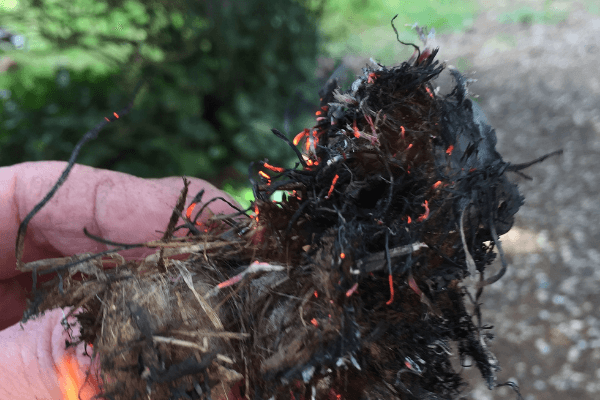
Once the small tinder is lit, you can then transfer the ember to a larger tinder bundle where you can build the fire by adding larger pieces of wood.
Lighting a campfire is difficult without tinder, as you can’t get a fire started without that initial spark.
Logs take a lot more heat to catch on fire than tinder does.
Who Invented The Fire Piston?
A fire piston, also known as a fire syringe or a slam rod fire starter, has been used for hundreds of years in South East Asia and the Pacific Islands.
Their use was mapped to have reached across Africa.
In 1745, Abbot Agostino Ruffo created the first documented fire pistons in Europe.
It’s debated whether he was inspired by Southeast Asian fire pistons or air guns he was working on for John V, king of Portugal.
Either way, the fire syringe, as it was called, was a popular household tool in England and France during the early 19th century.
However, it eventually lost its popularity when the safety match was invented in 1884.
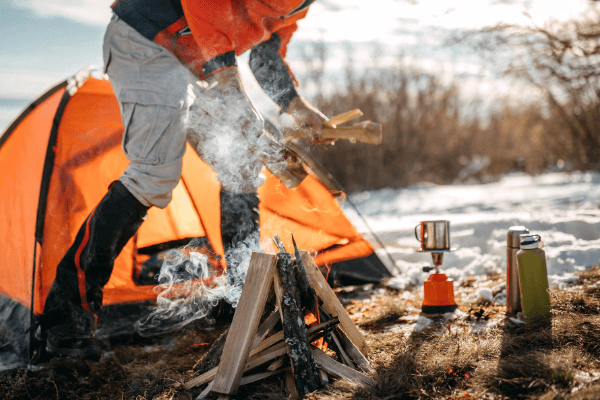
Now the device is primarily used as a survival fire starter.
Survivalists and outdoor lovers create homemade fire pistons to add to their survival gear.
Primitive tools often get replaced by newer inventions, but many people still enjoy using these ancient tools.
This tool has the benefit of not being affected by moisture like matches.
How Do They Work?
The concept of fire pistons is pretty simple.
First, you need a hollow cylinder that is sealed at one end and left open on the other.
Then, you need a piston with an airtight seal to insert into the hollow cylinder.
The piston should have an O-ring (or other similar device) on one end to create the airtight seal when inserted into the cylinder.
The other end of the piston should have a knob or handle for a good grip when compressing the piston into the cylinder.
Those three simple pieces are the only required parts needed for a fire piston.
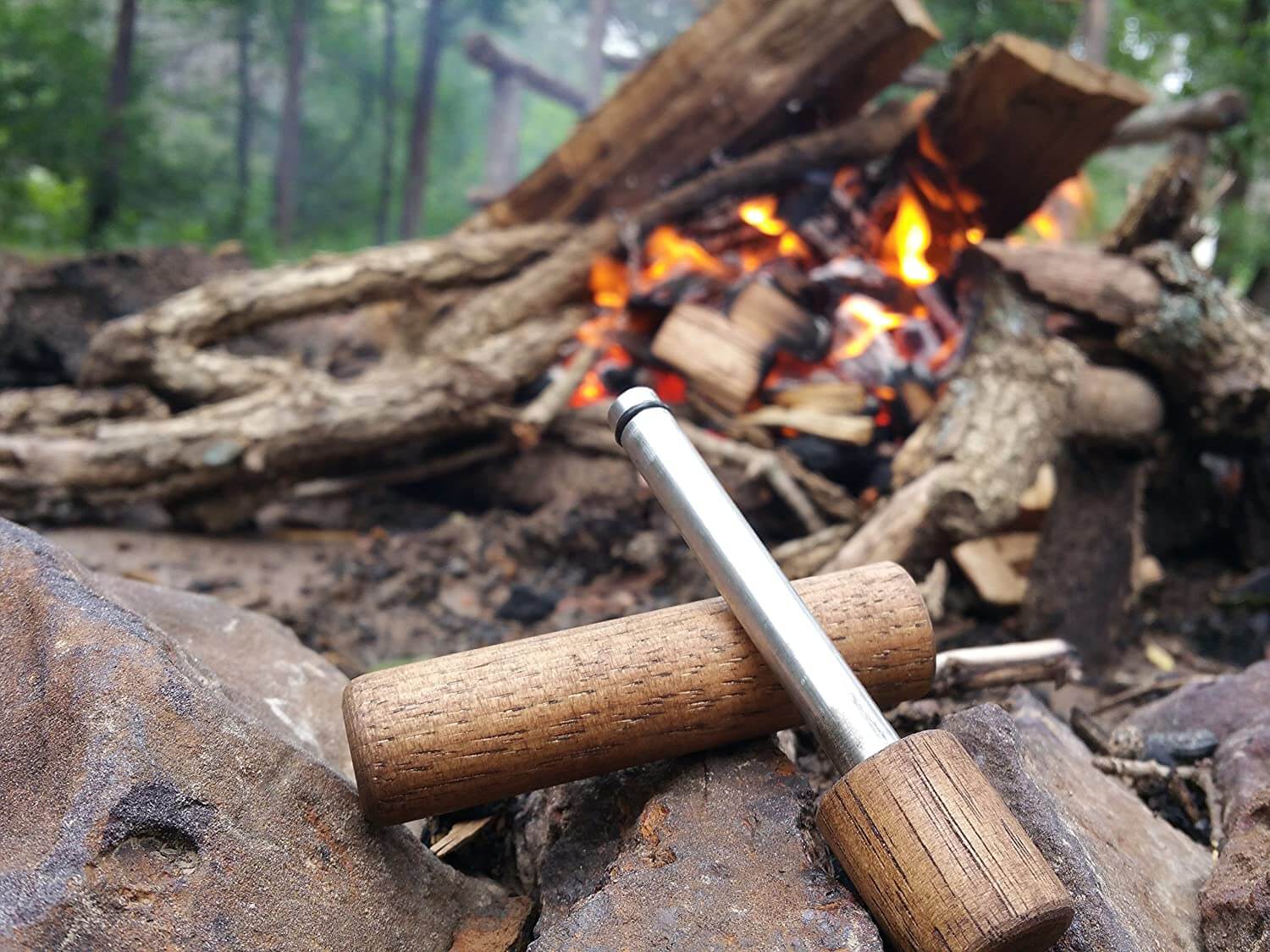
There are a few more important things to note when trying to use the fire piston.
The hollow cylinder has a hole or crevasse in the sealed end that holds a small amount of tinder.
Tinder can be char cloth, dry leaves, birch tree bark, or cotton balls because they are easily combustible.
To use one, load the end of the piston with tinder, lubricate the O-ring with petroleum jelly (if necessary to create an airtight seal), rest the cylinder on a solid, sturdy surface and quickly slam or compress the piston into the cylinder.
The air inside the cylinder gets compressed.
The compressed air increases in pressure, which, in turn, increases the temperature. This temperature increase lights the tinder inside the cylinder.
Once lit, quickly remove the burning tinder from the cylinder before it reduces the available oxygen and goes out.
Fires need three elements: oxygen, heat, and fuel.
Once the tinder uses up the available oxygen, it will go out because oxygen keeps the heat up to keep the flame burning the fuel.
Next, transfer the tinder to a larger tinder bundle or similar component to build the fire.
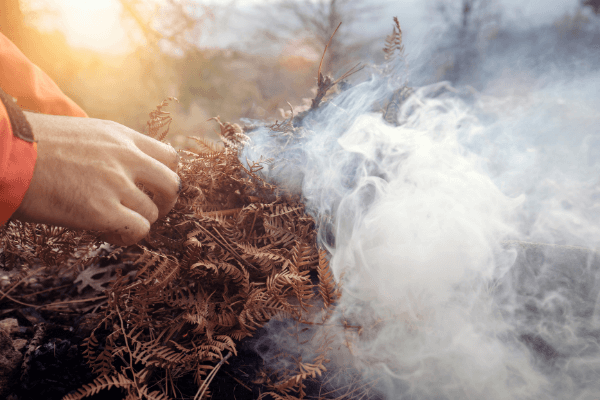
Logs and larger wood pieces take more heat to catch on fire.
You need to keep the larger tinder bundle inside the campfire to allow the logs time to catch.
This will make a larger fire, and you will need to keep feeding more logs into the fire to keep it lit.
This is your fuel. Once the fuel runs out, the fire has nothing to burn.
Water cools the fire, so wet materials won’t be easy to get lit or stay lit.
Make sure you keep any logs out of the weather to keep them dry for building fires.
Logs already have a higher water content, which is why the tinder is needed to start your fire.
Building A Homemade Fire Piston
You can build your own homemade fire piston by using supplies commonly found around your home or garage.
This could be a fun project for kids to learn about science or for survivalists who want to practice using primitive tools.
For example, copper tubing capped at one end will make an excellent cylinder.
Next, find a dowel rod that fits tightly into the copper cylinder to be used as the piston.
The dowel rod can be sanded if necessary to achieve a tight fit.
The tight fit is the most important part, and your fire piston won’t work without this seal.
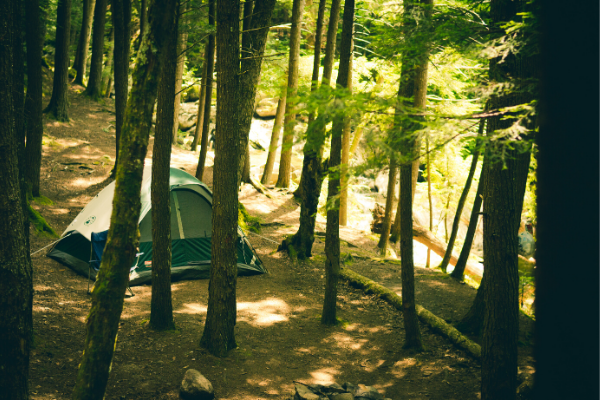
This seal is what creates the compressed air required to ignite the tinder.
Score a line in the end of the dowel rod to hold an O-ring in place, drill a hole in the end to hold the tinder and place a knob on the other end for a handle.
Lubricate the O-ring with petroleum jelly and that's it.......a homemade piston to start a fire!
Make sure you place the fire piston on a steady surface so that you have a good grip to push the piston quickly down through the cylinder.
The handle should provide you with a nice grip, and the O-ring will create the airtight seal you need to spark a flame.
Overall
Modern technology has now made these devices more reliable than ever.
Pressure relief mechanisms, O-ring reliability, resistance to moisture and state of the art design concepts allow tinder to be lit with a single compression.
If you're looking for a simple device that's reliable and not affected by moisture, a fire piston is a great choice.

About the Author
Obsessed with firewood, Nick is behind over 350+ of Firewood For Life's articles, as well as countless reviews, guides and YouTube videos to help readers like you reduce heating costs and create the perfect fire.


